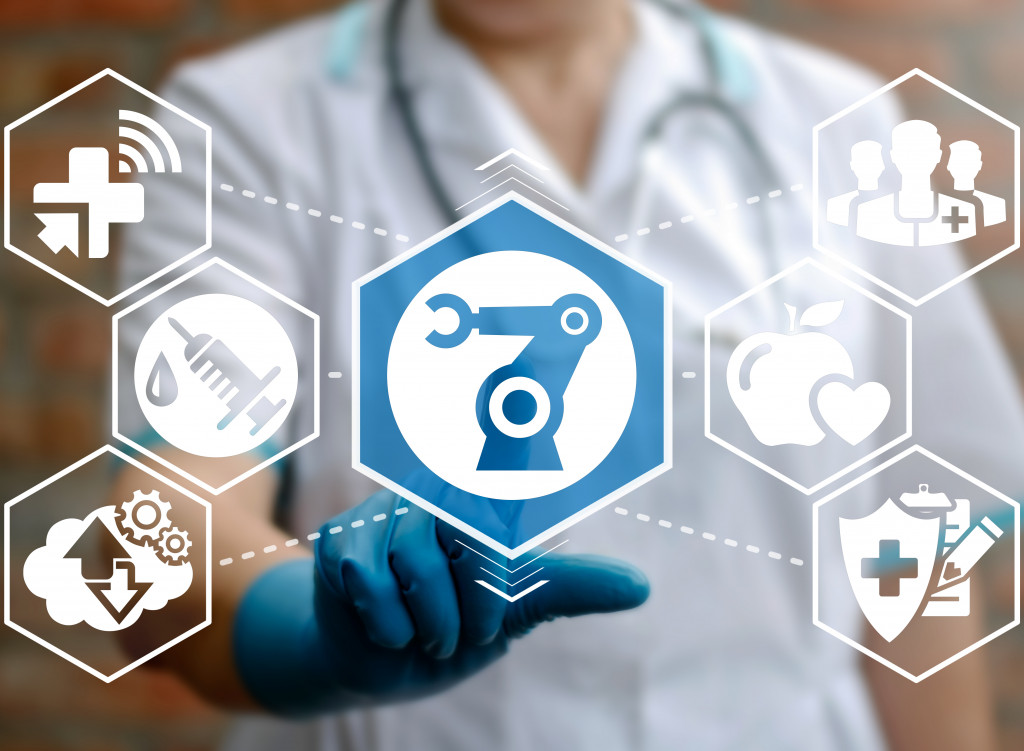Robots are increasingly becoming a staple in the medical industry as their ability to assist surgeons and another medical staff improves. While some people may be worried about robots taking over jobs in the medical field, it is more likely that they will enhance human professionals’ work.
The field of health and wellness is one of the biggest in the country. It’s worth around $7 trillion, and it’s one of the leading industries with tons of investors. Some of these investments are going into robotics.
Robots in the medical industry are still in their early developmental stages. However, they have already begun to show great promise and potential. As robots continue to become more advanced, their role in the medical industry will only grow. This could potentially lead to better patient care and outcomes and increased efficiency in the healthcare system overall. There are already many examples of robots being used in medical settings, such as surgery and rehabilitation.
Surgery
One of the most obvious ways robots are used in the medical industry is through surgery. Robots have been used in surgeries for many years now, and their accuracy and precision have only improved.
In some cases, surgeons can even control the robot during surgery, making the procedure even more precise. This can be highly beneficial, especially in delicate surgeries where even the slightest mistake could have serious consequences. Moreover, with increasing improvements in internet connection such as 5g, remote surgeries are becoming ever more possible.
Surgeons can’t be in multiple places at once, but robots can. This means that, in the future, surgeons may be able to control robot assistants from a remote location. This would allow them to perform surgeries in multiple hospitals or even various countries simultaneously.
Robots are also being used in the field of dentistry. A dental clinic can utilize robots the same way. Through robots, a simple dental operation such as tooth extraction can be done. However, more complicated operations, such as dental implants, are also possible with the help of robots.
Of course, this is still far into the future, and there are many ethical considerations to take into account.
Rehabilitation
Robots are also being used in rehabilitation settings to help patients regain their strength and mobility. Several different robots are being used for this purpose, such as the ROBODog, a robot designed to help children with cerebral palsy.
Other robots used in rehabilitation include the Paro robot, which is a therapeutic robot seal, and the ReWalk, which is a robotic exoskeleton that allows people with lower-body paralysis to walk again. All of these are still in the early stages of development, but they have already shown great promise in helping people recover from serious injuries.
However, the use of robots in rehabilitation is highly beneficial for patients. As they continue to advance, even more people will likely benefit from their use.
Medical Supplies

Robots are also being used to deliver medical supplies to patients. This is especially beneficial in hospitals, where there is often a staff shortage. By using robots to provide medical supplies, hospitals can free up staff to do other tasks, such as caring for patients.
One example of a robot used for this purpose is the TUG Robot, which is designed to autonomously navigate hospital corridors and deliver supplies to patients’ rooms. The robot can avoid obstacles and can even take the elevator if necessary.
Some robots are even made specifically designed to transport medication from the pharmacy to the patient’s bedside. This helps ensure that patients can get their medication as quickly as possible.
Administration
Lastly, robots can handle some jobs in the administration. For example, robots can be used to input patient data into the system or to handle billing. This can help to free up staff members so that they can focus on other tasks. They can even handle scheduling and even answer some frequently asked questions by many patients.
Some hospitals in Japan even use robots at their front desk. These robots can greet patients, take their temperature and blood pressure, and even answer some questions about the hospital.
Conclusion
Robots are becoming increasingly commonplace in the medical industry as their abilities to assist surgeons to continue improving. In the future, it is likely that robots will play an even bigger role in the medical field, from performing surgery to delivering medication. With their help, hospitals can free up staff members to focus on other tasks, and patients can get the care they need more quickly and easily.
Robots are already playing a significant role in the medical industry, and their use is only expected to grow in the future.


